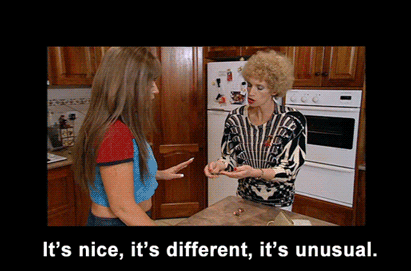Maintaining culture in the hybrid workplace

Fact or fiction: maintaining culture in the hybrid workplace relies on people being physically together.
Historically, we would have said fact, right? It’s certainly easier. Thanks to the pandemic, we’ve realised that there is more than one way to form and evolve a great workplace culture. As humans, we were born to adapt.
During the pre-pandemic times, working from home was deemed the exception, not the norm. In fact, working from home was a rather eyebrow-raising request to employers. After all, back then, most organisations were still valuing hours spent in the office over output. When flexibility became a necessary step for survival, we found that the new mode wasn’t as disastrous as we anticipated.
Now that we are considering post-pandemic life and what that may look like, it is clear that some of the new adaptations are here to stay. For some people, working from home was ideal for helping them achieve better work-life balance and allowing them to maximise their productivity. For others, working from home was about as nice as being poked in the eye with a sharp stick: they couldn’t wait until they could get back into the office. But most of all, employees wanted a bit of both.
Which brings us to the hybrid workforce. *crowd oooh’s and ahhhh’s*
For employees, this level of flexibility is a dream come true. For leaders, this is uncharted territory that’s tough to navigate. The most common question we’re hearing is ‘how do we maintain culture in the hybrid workplace?’
Well, we are here to tell you that it’s possible, if executed properly. We can’t take the things that we used to do and drop them into a hybrid workforce, but if we do things a bit differently, your team culture will thrive.

Kath and Kim’s thoughts on the hybrid model
If, on the other hand, we adapt, then we can build up our culture to its pre-COVID strength, even with people out of the office. Here are four areas to consider when transforming your culture to suit a hybrid world.
How we create culture in the hybrid workplace
Social connections
In order for most of us to satisfy our primal needs and live a fulfilling life, we rely on human connection – we have literally been neurologically programmed to crave it. COVID really highlighted that one for us didn’t it?
You’ve probably noticed this, but when we meet online, all of our conversations are task-oriented. Incidental is out, intentional is in! That may not seem like such a bad thing for productivity, but what impact does it have on our human side? Spoiler alert – it’s not good.
When we are all in the office, shuffling into lifts or moseying around in the kitchen looking for our kombucha, we encounter other people, all day. We have casual exchanges that may seem like meaningless interactions, but they are actually super important for us to feel a sense of belonging and connection with our organisation and our colleagues.
To create meaningful connections and establish culture in the hybrid workplace, we need to do something different. With some people working remotely on any given day, and therefore some of those incidental interactions being lost, we all have to take responsibility to replace them with something more deliberate.
That means making the most of your time in the office to build connections. Picking up the phone for a chat, whether you’re in the office or out of it. Or adopting any other social initiative that keeps those connections alive and kicking.
When you have a coffee with Monty in the office, pick up the phone and have a snack with Mark at home. When you crack a joke with Sally coming out of a meeting, text it to Rohit at home. Or if you’re at home, snap a picture of your new houseplant and send it to Peggy in the office. It goes both ways.

Mark is feeling a tad lonely
If we skip these things, people will start to feel disconnected. Without a range of different interactions, the roles that once brought people so much joy will start to feel incredibly lonely. Employees who work on opposite days will lose all connection, impacting teamwork, morale and of course, productivity.
Wellbeing
To create a strong culture in a hybrid world, employee wellbeing should be one of the main areas of focus. After all, if employees aren’t doing so well, neither will your culture.
Although it was horrific, one of the upsides to the pandemic was that it allowed us to become more open about our mental health and wellbeing and forced us to take it a bit more seriously. Checking in on your employees was no longer an ‘optional extra’, it was a necessity.
It was obviously a very tough time for everyone, but when it came to identifying who needed the most support, well it was harder to read the subtle signs because you couldn’t physically see them. People could very well be ‘turning it on’ for the one-hour Zoom call, then turning it off and falling in a heap.
Organisations had no choice but to place a much greater emphasis on wellbeing. Employee assistance programs were rolled out, managers were making an effort to pick up the phone and have a social chat with their team members, various wellbeing and health initiatives were also being embedded within the operating rhythm – and they helped a tonne.
As we move into the hybrid workforce, it’s important we don’t lose any of this. We must think about all employees, no matter where they are. Inclusion and a sense of unity will go a long way to strengthening your workplace culture.
Keep checking in with all your staff, keep the employee assistance programs going and keep the wellbeing initiatives running. You have no idea just how much they mean to people.
Communication
Like in all relationships, communication at work is key. If you have problems with effective communication, you will also have problems with alignment, output and culture.

There are two main issues to tackle.
Firstly, to state the obvious, hybrid models of working require an over reliance on electronic communication. When people communicate electronically, there are so many non-verbal cues that can be missed, ones that we take for granted when communicating in person.
When reading an email, talking over the phone or even video chatting, tone is much more likely to become misconstrued and body language can be missed. There is less of a chance to absorb the information and also less opportunity to clarify that the information has been received correctly. People may be on different pages but not even realise it. When this happens, people will unknowingly fill in the gaps with their own biases that may not actually be correct.
Secondly, because our brains don’t just suddenly stop working at the end of a meeting, we have to ensure that people are kept on the same page, but as close to real time as possible. Consider those meetings where half of the people are physically together in a meeting room, while the other half are up on a screen. The meeting goes along, following the agenda as planned. When all points have been discussed, the screen goes off and the faces disappear. But what happens when those in the office begin to gather their things and head back to their desks? They talk, continuing the discussion points from the meeting.
For our organisational cultures to thrive within a hybrid working environment, we need to be conscious of our incidental conversations and be mindful of who else may need to be part of the conversation. Likewise, for those at home, making the effort to check in about any updates on a meeting by the end of the day helps to cover off the bases.
In short, adapting and evolving the way we communicate will need to be an area of focus as we enter a hybrid world.
Leadership
Adrenaline might have got us through 2020, but making the complete transition to leading a hybrid workforce is a whole different ball game.
On the one hand, we need to reconsider how we evaluate performance. If we’re not seeing every employee every day, how are we meant to know they’re actually working? It starts with trust. If you communicate with your staff that output is more important than spending hours in the office, and allow them flexibility with their scheduling, you will be rewarded with greater productivity.
Monitoring this relies on open lines of communication with and between all staff, to ensure regular status updates and that support can be offered if necessary. And then, in your team meetings, call out good work. Employees who receive recognition for their work will be driven to continue.
Above all, exemplifying the qualities you would like to see from the team (better social connection; concern for wellbeing; prompt and detailed communication) will help them build a strong culture around you. Keep an open mind and make sure you’re clear in what you want and offer them responsibility: it’s the role of everyone to build our culture, not just the people who are mostly in the office.
Why we need culture in the hybrid workplace
A hybrid workforce offers us many opportunities: diversity of thought, better mental health, and increased productivity, to name three. But to achieve those, we must recognise that this is new cultural territory to navigate and will take effort and change to get the most out of it.
Leaders must facilitate the right environment to strengthen culture, and employees must take responsibility for building it, no matter where they work.
Take time from your daily tasks to step back and consider if you’ve included everyone, or checked in with them recently, or even shown them your cat’s new haircut. An inclusive approach from everyone will mean a culture that drives your business towards success.
Need help building culture in your hybrid work environment? Here are Interchange we are renowned for transforming workplace culture. We want to help make your hybrid workplace one where you entire team will thrive whether they’re at home or in the office. Fill out our contact form to learn more about how we can help.